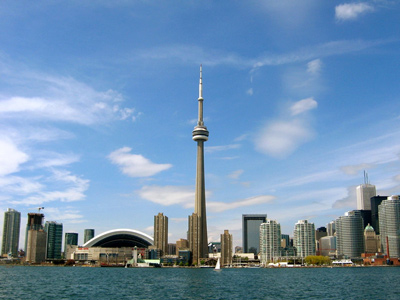| Official Name: | Canada | Population: | 34 million people |
| Capital: | Ottawa | State language: | English, French |
| Form of Government: | Confederate Monarchy | Administrative division: | Canada has 10 provinces and 3 territories |
| International phone code: | 1 | Time difference with Moscow: | -8 - 12 hours |
| Monetary unit: | Canadian Dollar (CAD) | Rate: | 1 CAD = 56.93 RUR |
EDUCATIONAL INSTITUTIONS
- Year-Round Language Courses
- Summer and Vacation Programs
- Secondary Education and Pre-University Preparation
- Undergraduate Courses
- Cape Breton University
- Centennial College
- Douglas College
- Fanshawe College
- International Language Academy of Canada (ILAC)
- Niagara College
- Royal Roads University
- Simon Fraser University
- Thompson Rivers University
- Toronto School of Management
- Trebas Institute
- University Canada West
- University of Manitoba
- University of Toronto
- Postgraduate Courses and MBA
- Professional Training and Internships

INFORMATION ABOUT CANADA AND ITS EDUCATION SYSTEM
General information about the country.
Canada is a country in North America, ranks second in terms of area. Canada is washed by the Atlantic, Pacific and Arctic oceans and borders with the U.S. in the south and the north-west, with Denmark (Greenland) in the northeast, and with France (St. Pierre and Miquelon) in the east. The country area - 9,9 thousand square kilometers, population - 34 million people. The capital is Ottawa. Canada - a constitutional monarchy with a parliamentary system, is a bilingual and multicultural country, where English and French languages are recognized as official at the federal level. Founded by French explorer Jacques Cartier in 1534, Canada originates from the French colony at the site of modern Quebec City, was originally inhabited by indigenous peoples. After a period of English colonization of the union of three British colonies (which were previously the territory of New France) Canadian confederation was born. Canada gained independence from the United Kingdom as a result of the peace process from 1867 to 1982.
Higher Education in Canada.
The higher education system in Canada is the second largest in the world after the United States. In Canada there are about 100 universities. Diplomas from Canadian universities are highly rated in all countries. Leading universities in Canada gave the world a lot of Nobel laureates, leading politicians and businessmen. Since the majority of universities funded by the state, they provide consistently high quality of higher education, regardless of location or area of study. In addition, they possess a high degree of academic autonomy.
The school year usually runs from September to May. Some universities are on a semester and trimester system, allowing all courses available even during the summer.There is no Canada-wide entrance test: each university sets its own admission standards and assesses the qualifications of each applicant individually.
As Canada has two official languages, English and French, a foreign student can choose the school, the classes which are conducted in either English or French. Some universities offer instruction in both languages. Nevertheless, to attend a Canadian university is not necessarily fluent in both languages.
For training program to obtain a degree, in most English-speaking universities, students for whom English is not their first language must have English test. Commonly accepted test of TOEFL, but Canadian universities often have their own tests for students or may accept other tests such as IELTS.
The level of French in French-speaking universities is determined on an individual basis, and University may use their own written tests.
The higher education system in Canada includes three steps:
- Initial higher (Undergraduate) - a three-year training, after which is assigned to a bachelor's degree
- Workshops Program (Graduate) - duration of training 1-2 years
- Doctoral degree (Postgraduate)'s degree of Doctor of Philosophy (PhD), duration of training for 4 years

 +7 (495) 228 03 00
+7 (495) 228 03 00
 Canada
Canada


